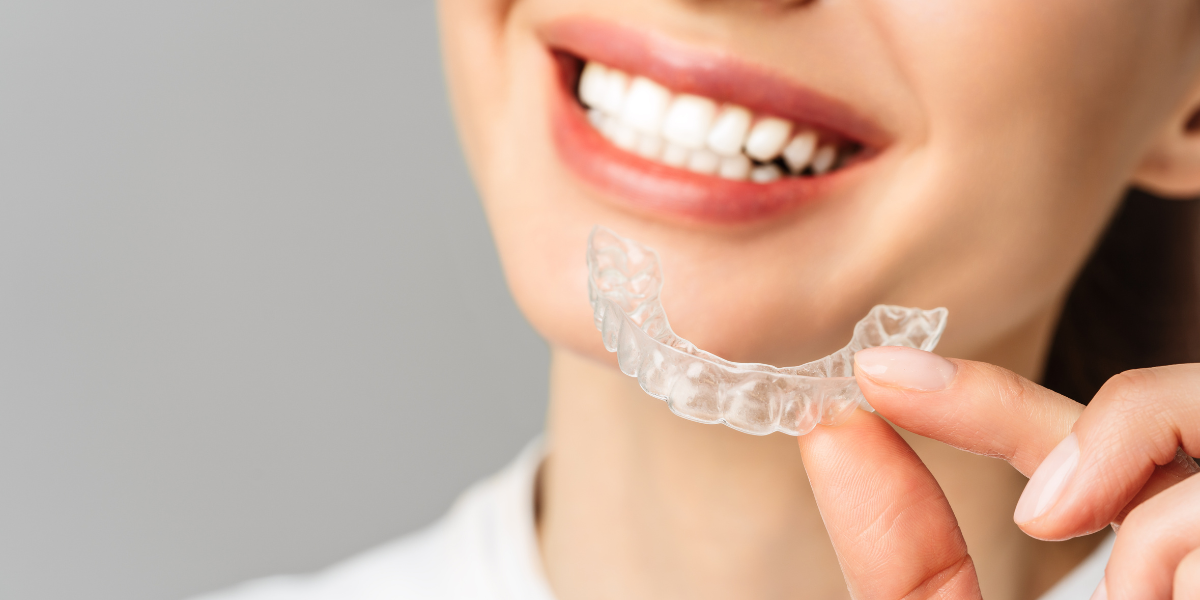Teeth whitening: tips & real expectations from a dental hygienist

One dental hygienist breaks down what factors define our individual tooth color, each over-the-counter whitening option & whether it’s really possible to get “Kleenex” white teeth.
There are many beliefs and psychological reasons for whitening teeth as a social prerogative, including confidence, self-esteem, and quality of life. When we smile, our lips curve into a unique shape that can lighten the mood of any situation. It is a simple gesture that can express love, joy, appreciation, and other positive emotions. However, if the teeth are discolored, one may not want to smile as often for fear of embarrassment or judgment. Dissatisfaction with tooth appearance and color is associated with an increased desire for treatments that improve dental aesthetics, including tooth whitening.[1]
Society has been obsessed with the aesthetics of whiter teeth, and the number of products available has increased due to popularity and technological advances. We all strive for white teeth, but it can be challenging to maintain natural tooth color, especially with the amount of staining that occurs from food, drinks, and smoking. Fortunately, below are a few tips on teeth whitening that can help you understand what to expect from teeth whitening products and procedures and how to maintain a beautiful white smile.
What defines our natural tooth color?
White teeth are often seen as a sign of beauty and good health, but getting and maintaining white teeth can be difficult. Everyone’s teeth are slightly different in color, ranging from yellow to gray. Certain minerals cause this natural tooth color in the enamel, and some people may be more prone to staining than others.
Natural enamel is a white color with some translucency. However, due to continuous chemical and mechanical wear of enamel with increasing age (erosion, etc.), the enamel will become thinner and more translucent, i.e., the dentin will become more visible, and the overall tooth color will become darker.[2] Researchers have revealed the association of increased age with darker, yellow teeth.[3]
Tooth color is affected by intrinsic and extrinsic factors. Extrinsic factors like smoking or wine and intrinsic factors such as tetracycline staining, teeth vitality, age, and congenital defects are known to affect tooth color.[3]
Can your teeth be as white as a Kleenex?
Enamel naturally has a white hue, and the underlying layer, dentin, is yellow. If the enamel is thin due to erosion or grinding, the teeth can appear more yellow. Some sources reveal that extremely white teeth look unnatural and distracting. To achieve teeth as white as Kleenex, if that is your goal, a more permanent procedure such as veneers or crowns is necessary. However, achieving a naturally white smile with the guidance of your dental professionals is best to avoid unnecessary expenses and damage to the teeth.
Whitening options & expectations
Numerous over-the-counter (OTC) oral health products contain whitening agents, including mouthwashes, toothpastes, floss, and at-home whitening kits. The two types of whitening agents are typically hydrogen peroxide or carbamide peroxide. A 10% carbamide gel has been approved by the American Dental Association for home bleaching.[4] Whitening mouthwashes contain a low concentration of hydrogen peroxide (1.5%) and have generally been shown to be ineffective in improving tooth color, even after up to 30 days of exposure.[5]
Whitening strips, introduced in the 1980s, typically contain 5-14 % hydrogen peroxide, and in-office whitening is performed under the supervision of a dentist. The in-office whitening procedure typically involves the application of high concentrations of hydrogen peroxide (35-40%) for 15–20-minute periods over a 45-60-minute clinical session.[5]
Whitening toothpaste typically contains higher amounts of abrasives and detergents than standard toothpaste, to remove tougher stains. Whitening toothpaste does not contain bleach (sodium hypochlorite) but some contain low concentrations of carbamide peroxide or hydrogen peroxide that help lighten tooth color. Whitening toothpastes typically can lighten tooth color by about one or two shades.[6]
Tips to achieve optimal results
- Dental restorations such as crowns, veneers, and tooth-colored (composite) fillings will not whiten like a natural tooth.
- Limit your consumption of foods and drinks known to stain teeth, such as coffee, tea, and red wine, especially following any whitening procedure.
- Brush and clean between your teeth at least twice daily and visit the dentist regularly.
- Talk with your dental professional to find the right whitening product.
- Quit smoking.
- Rinse with water or use a straw when drinking dark-colored beverages.
- Avoid dark-colored food and beverages for 24-48 hours after whitening.
- Follow the manufacturer’s instructions on any whitening product.
By following these tips for maintaining white teeth, you should be able to maintain a bright, healthy smile!
- Newton, J., Subramanian, S., Westland, S., Gupta, A., Luo, W., & Joiner, A. (2021). The impact of tooth colour on the perceptions of age and social judgements. Journal of Dentistry, 112, 103771. https://doi.org/10.1016/j.jdent.2021.103771
- Epple, M., Meyer, F., & Enax, J. (2019). A Critical Review of Modern Concepts for Teeth Whitening. Dentistry Journal, 7(3). https://doi.org/10.3390/dj7030079
- Haralur, S. B. (2015). Effect of Age on Tooth Shade, Skin Color and Skin-Tooth Color Interrelationship in Saudi Arabian Subpopulation. Journal of International Oral Health : JIOH, 7(8), 33-36. https://www.ncbi.nlm.nih.gov/pmc/articles/PMC4588786/
- Epple, M., Meyer, F., & Enax, J. (2019). A Critical Review of Modern Concepts for Teeth Whitening. Dentistry Journal, 7(3). https://doi.org/10.3390/dj7030079
- Irusa, K., Alrahaem, I. A., Ngoc, C. N., & Donovan, T. (2022). Tooth whitening procedures: A narrative review. Dentistry Review, 2(3), 100055. https://doi.org/10.1016/j.dentre.2022.100055
- Carey, C. M. (2014). Tooth Whitening: What We Now Know. The journal of evidence-based dental practice, 14 Suppl, 70. https://doi.org/10.1016/j.jebdp.2014.02.006







